Tumbas Reales Oreung de Gyeongju (경주 오릉)
2.2Km 2025-03-19
Geumseong-ro 38-9, Gyeongju-si, Gyeongsangbuk-do
Parque Hwangseong (황성공원)
2.3Km 2025-05-27
Yongdam-ro 79-41, Gyeongju-si, Gyeongsangbuk-do
Tumba del Rey Muyeol y Estela del Rey Taejong Muyeol (경주 무열왕릉, 태종무열왕릉비)
2.3Km 2025-05-23
Neungnam-gil 10-4, Gyeongju-si, Gyeongsangbuk-do
La tumba real del rey Muyeol es de Kim Chun-chu, quien subió al trono como 29º gobernante del Reino de Silla. Este rey intentó unificar los tres reinos aliando fuerzas con la dinastía Tang de China, pero falleció antes de que pudiera lograr su objetivo con éxito. Al este de la tumba, se encuentran los restos de su estela con una inscripción que dice: “Taejong Muyeol Daewangjibi (lápida del Gran Rey Muyeol)”.
Centro de Arte de Gyeongju (경주예술의전당)
2.3Km 2025-05-26
Alcheonbuk-ro 1, Gyeongju-si, Gyeongsangbuk-do
El Centro de Arte de Gyeongju cuenta con 3 escenarios grandes para espectáculos y diferentes espacios para albergar exhibiciones y presentaciones artísticas. Fue abierto el 6 de noviembre de 2010.
Solar del Palacio Wolseong de Gyeongju (경주 월성(반월성))
2.3Km 2023-01-16
Inwang-dong, Gyeongju-si, Gyeongsangbuk-do.
Este fue el lugar de la fortaleza del palacio durante la dinastía Silla (57 a.C. - 935). El nombre de la fortaleza significa literalmente 'luna creciente encima del monte'.
Los famosos libros de Samgukyusa dicen que el cuarto rey de Silla, Seoktalhae (57 a 80) pensaba que esta área era ideal para la fortaleza y compró la tierra a un noble. El segundo rey Namhae (4 a 24), impresionado por la acción de Seoktalhae, lo acogió como hijo más tarde, convirtiéndolo en el cuarto rey. La zona estuvo entonces bajo mandato de Silla por 900 años, siendo el último rey, Gyeongsun (927 a 935). A pesar de la magnífica grandeza del palacio, ahora es solo un terreno baldío, y según dicen estaba llena de edificios imperiales de la dinastía Silla.
En la actualidad, la zona de Wolseong tiene un congelador hecho de rocas llamado Seokbinggo, un lugar para arquería, un campo de carreras de caballo y un parque infantil, que se asemeja a los terrenos del período Joseon (la dinastía que gobernó en la península coreana desde 1392 a 1910).
Palacio Donggung y Estanque Wolji de Gyeongju (경주 동궁과 월지)
2.5Km 2025-04-24
Wonhwa-ro 102, Gyeongju-si, Gyeongsangbuk-do.
Según el libro histórico Samguk Saji, durante el 14to. año del reinado de Munmu (661-681) en el período de Silla (57-935), se construyeron pequeñas montañas y un enorme estanque dentro del palacio Donggung. Además, se plantaron hermosas flores y se introdujeron animales exóticos para crear un encantador ambiente de jardín. El estanque Wolji se encuentra en Wolseung (una fortaleza construida en 101 en el período de Silla). Según una excavación realizada en 1974, las formas esféricas (200 metros de diámetro y 180 metros de alto) indican que había 3 islas dentro del estanque. Gracias a la continua restauración, actualmente se puede ver el estanque Wolji en su original esplendor.
Sitio de la Sala Imhaejeon
Es uno de los palacios apartado del palacio principal de la familia real de Silla. Esta estructura fue utilizada como residencia de los príncipes. Imhaejeon es históricamente la estructura más importante, ya que aparece en muchos libros de historia y también se denomina al área completa como Imhaejin. A través de una excavación, se descubrieron varias estructuras, Hoerang (área de pasillo), el estanque Wolji y cinco torres en la parte oeste. Algunas áreas han sido restauradas mientras que otras fueron mantenidas en su estado natural, dejando las piedras a la vista.
Solar del Templo Hwangnyongsa de Gyeongju (경주 황룡사지)
2.6Km 2025-03-19
Imhae-ro 64-19, Gyeongju-si, Gyeongsangbuk-do.
El solar del templo Hwangnyongsa se ubica en frente del templo Bunhwangsa en Guhang-dong, Gyeongju. Durante la era de Silla, el templo Hwangnyongsa era el más grande de su tipo con el mayor volumen de tesoros budistas del país.
La construcción del templo empezó en el año 553 en unos terrenos cerca del recinto royal de Banwolseong por orden del rey Jinheung. El rey en un principio tenía la idea de construir un palacio, pero terminó decidiendo la construcción del templo, después de recibir noticias que habían visto un dragón amarillo por los alrededores del edificio. Por este motivo fue nombrado Hwangnyongsa (templo del dragón amarillo) y fue terminado en el año 569, 17 años después de su inicio. Los murales del templo cuentan con un viejo árbol de pino dibujado por el artista Solgeo. Durante la era Silla, el templo fue el centro del budismo patrocinado por el Estado.
Más adelante, cuando el monje Jajang estudiaba en China durante la dinastía Tang, se le cruzó un dios mientras pasaba por el estanque Taihe. El dios le dijo: "El dragón amarillo es mi hijo mayor, y es el guardián del templo Hwangnyongsa por órdenes de Brahma, el Creador. Si construyes una pagoda de nueve niveles cuando regreses a Silla, los estados vecinos se someterán y pagarán tributos, y la causa real será más fuerte. Una vez se termine la construcción de la pagoda, prepara una ceremonia en memoria de los dioses locales y perdona a cualquiera de los criminales del país. Si sigues todo lo que te he dicho, ningún otro Estado se atreverá a invadir Silla".
Después de este encuentro, Jajang regresó a Silla y convenció a la reina Seondeok para que construyera la pagoda de nueve niveles. El arquitecto Abiji del estado vecino de Baekje diseñó la pagoda y el proyecto fue concretado por Yongchun y sus 200 hombres usando madera y piedra. La noche anterior a que las columnas fueran erigidas, el arquitecto Abiji soñó con la caída de Baekje y rechazó terminar el proyecto. Un viejo monje y un hombre con mucha fuerza aparecieron por sorpresa del salón principal del templo, erigieron las columnas y desaparecieron majestuosamente. Abiji estaba tan soprendido al verlo que aceptó que su país desapareciera como un destino de los dioses, y empezó de nuevo el trabajo en el templo (Samgungnyusa, Memorias de los Tres Reinos).
A 23 años de la finalización de la pagoda, la reina Seondeok, unificó los Tres Reinos; más tarde, numerosos sabios reconocieron la pagoda como un factor contribuyente en la unificación. De los tres tesoros de Silla (la estatua Jangyukjonsang, la pagoda de nueve pisos del templo de Hwangnyongsa, y el Cinturón del Rey Celestial Jinpyeong), dos se encontraban en el templo Hwangnyongsa. La campana más grande de Silla también se encontraba en Hwangnyongsa, pero fue quitada durante la invasión mongola. Los mayores monjes de Silla predicaron en el templo, y muchos reyes iban a escuchar las enseñanzas budistas.
Durante las excavaciones de julio de 1969, se encontraron enormes piedras angulares del salón del sermón, el auditorio y la pagoda. Ocho años de excavaciones y estudios arqueológicos revelan la disposición única de los terrenos del templo, que consistía en una pagoda y tres salas; también encontraron más de 40.000 objetos antiguos. Aunque los cimientos y otras estructuras de la base del templo fueron identificadas por las excavaciones, no hay indicios históricos sobre el diseño superior del templo, por lo que la restauración del templo en su totalidad es prácticamente imposible. La dimensión del templo, en base a los hallazgos arqueológicos, era de 70 hectáreas, aproximadamente 8 veces mayor que el templo Bulguksa.
Biblioteca del Milenio de Silla en el Museo Nacional de Gyeongju (국립경주박물관 신라천년서고)
2.6Km 2025-04-29
Inwang-dong 76, Gyeongju-si, Gyeongsangbuk-do
Museo Nacional de Gyeongju (국립경주박물관)
2.7Km 2025-03-21
Iljeong-ro 186, Gyeongju-si, Gyeongsangbuk-do.
El Museo Nacional de Gyeongju se caracteriza por su profunda tradición, con una historia de aproximadamente 90 años. Representando a Gyeongju, ciudad que había sido la capital del reino de Silla (57 a.C. - 935 d.C.), es en este museo donde podrá ver la historia cultural de Gyeongju.
El área de exhibición está dividida en cuatro grandes secciones: la Sala Principal, los Anexos I y II, y al aire libre, se halla el Área Descubierta de Exhibición (Predio del Museo). En la Sala Principal, podrá observar cerámicas de barro, y las salas de Artes y Artesanías podrá ver numerosas obras artísticas y trabajos artesanales. La Sala Memorial Gugeun tiene en exhibición 666 reliquias que fueron donadas por Lee Yang-Seon de su colección personal para su preservación. Los restos de reliquias excavadas de las grandes tumbas que se hallaban en la ciudad de Gyeongju se encuentran exhibidas en el Anexo I, o la Galería Gobun. Entre ellos, hay adornos magníficos tales como coronas de oro, coronas ornamentales, cintos y aretes, entre otros. A través de estos artículos podrá vivir la experiencia del sobresaliente nivel artístico del período de Silla. Aproximadamente 30.000 artículos fueron excavados del estanque Wolji, entre los cuales los más significativos se hallan expuestos al público en el Anexo II, o la Galería Wolji. Las demás galerías tienen en exhibición los utensilios del hogar. La gran variedad de clases de ítems ilustra la vida de la corte real durante el período de Silla.
Después de recorrer las galerías, podrá trasladarse al Área Descubierta de Exhibiciones, que la componen los Jardines del Museo. La Campana del Rey Seongdeok colocada aquí es la campana de mayor renombre de los templos budistas. También hay varios artículos de los palacios de la realeza y templos que se hallan exhibidos aquí. Las esculturas budistas decoran la mayoría de los objetos de piedra. Si usted es un viajero interesado en el budismo o la magnificencia de la cultura de los palacios reales, este es un sitio que no deseará perderse.
Campana Divina del Rey Seongdeok (성덕대왕신종)
2.7Km 2021-02-17
Iljeong-ro 186, Gyeongju-si, Gyeongsangbuk-do
+82-54-740-7500
La campana del rey Seongdeok, la más grande de toda Corea actualmente, mide 3,75 metros de alto, y un diámetro de 2,27 metros, y 11-25 centímetros de grosor. En 1997, el Museo Nacional de Gyeongju comprobaron que pesaba 18,9 toneladas. La campana fue hecha para rendir homenaje en memoria del rey Seongdeok. Se terminó en el año 771 y le dieron el nombre de "La Campana Divina del rey Seongdeok". Sin embargo, debido a que la campana se colocó en el templo Bongdeoksa, también se la conocía como la campana de Bongdeoksa. Su otro nombre por la cual es conocida es la Campana Emile, que proviene de una leyenda antigua en la que un niño fue sacrificado para dar sonido a la campana, de los que sus ecos "em-eeh-leh", se parecen a la palabra coreana tradicional para "mamá".
El sonido tubular del tubo en la parte superior de la campana que ayuda a que el sonido resuene es una característica única que se puede encontrar sólo en las campanas de Corea. El yongnyu, que servía como bucle para colgar la campana, fue decorado para parecerse a la cabeza de un dragón. Se puede encontrar una banda de arabescos en el hombro, y en el punto de la campana se aprecia la forma de una flor de loto. El magnífico diseño y los métodos de inscripción usados en la campana ejemplifican el gran arte de los artistas de la época de Silla unificada. La campana también tiene inscritos más de mil caracteres chinos, y su belleza y integridad han sido preservados cuidadosamente a pesar del paso de más de 1.300 años.
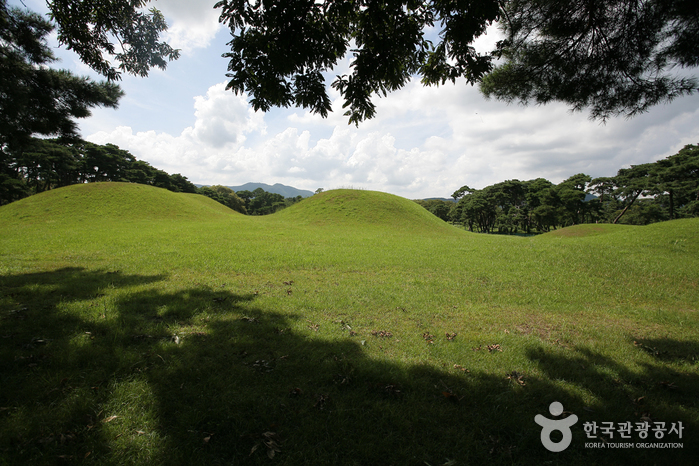

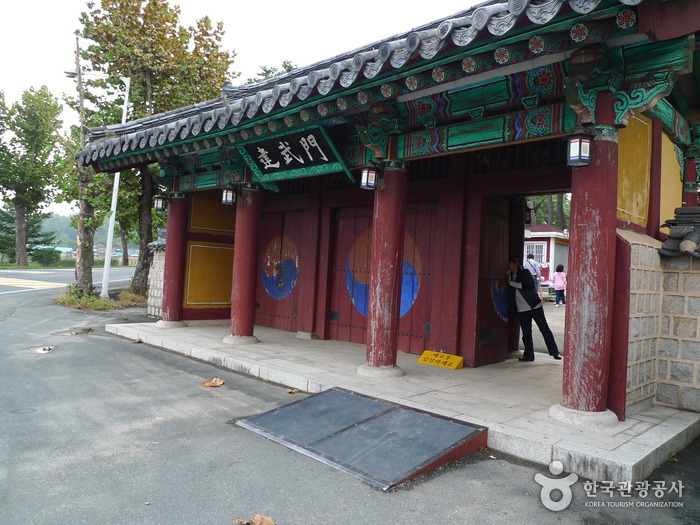
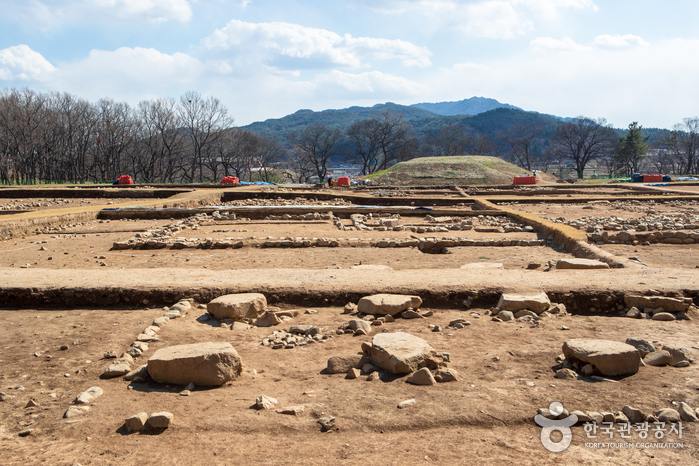
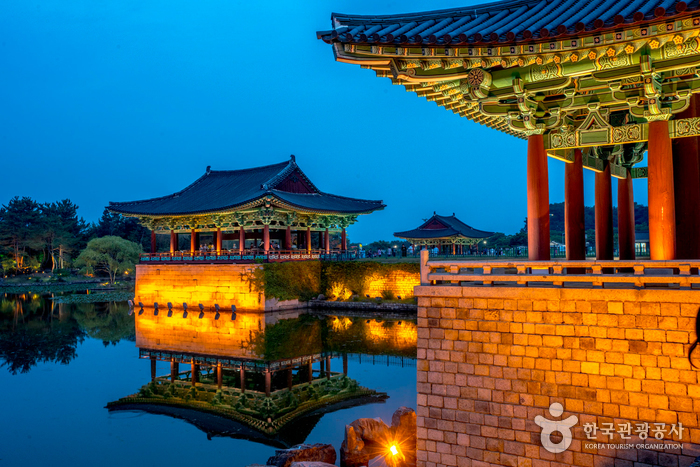
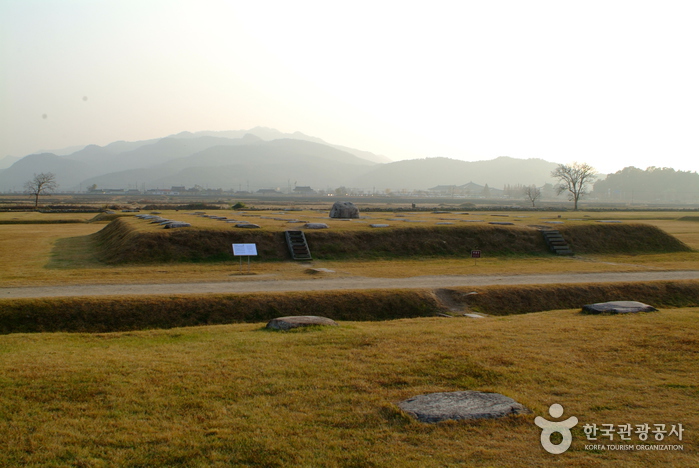
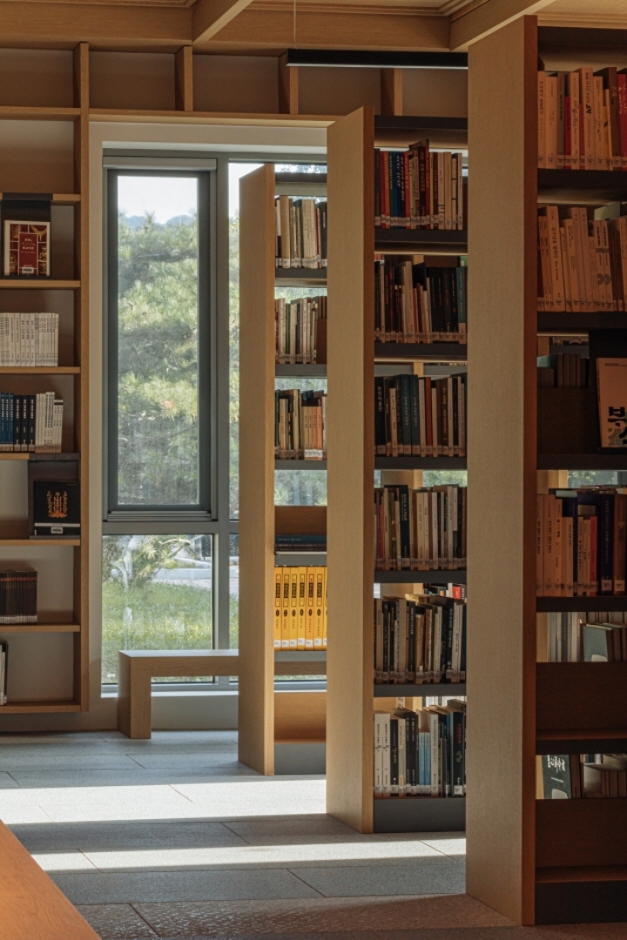
 Español
Español
 한국어
한국어 English
English 日本語
日本語 中文(简体)
中文(简体) Deutsch
Deutsch Français
Français Русский
Русский